Description
Bactamox Plus IM/IV Injection 1.5g combines amoxicillin and sulbactam to treat bacterial infections in Pakistan, where resistant strains are common in hospital settings like those in Karachi or Lahore. Amoxicillin kills bacteria by weakening cell walls, while sulbactam blocks beta-lactamase enzymes that cause resistance, broadening coverage against gram-positive and gram-negative organisms. Bosch Pharmaceuticals produces it for severe infections, available as a single vial per box, priced around Rs. 200-250, prescription-only, and distributed through DRAP-regulated channels.
How It Functions
Amoxicillin inhibits mucopeptide synthesis in bacterial cell walls during active growth, leading to cell lysis. Sulbactam extends this by inhibiting beta-lactamases, protecting amoxicillin from degradation and covering resistant strains like E. coli or Staphylococcus. Chemically, amoxicillin is (2S,5R,6R)-6-[(R)-(-)-2-Amino-2-(p-hydroxyphenyl)acetamido]-3,3-dimethyl-7-oxo-4-thia-1-azabicyclo[3.2.0]heptane-2-carboxylic acid trihydrate; sulbactam is sodium (2S,5R)-3,3-dimethyl-7-oxo-4-thia-1-azabicyclo[3.2.0]heptane-2-carboxylate 4,4-dioxide. Effects start within 30 minutes post-injection, lasting 6-8 hours.
Dosage Information
Administered via IM or IV by healthcare professionals:
- Adults: 1.5g (1g amoxicillin + 0.5g sulbactam) every 6-8 hours, up to 12g/day for severe infections.
- Children: 150mg/kg/day (100mg amoxicillin + 50mg sulbactam) in divided doses every 6-8 hours.
- Reconstitute vial with 3.2ml sterile water for IM (inject slowly); for IV, dilute in 100ml NS or D5W and infuse over 15-30 minutes. Duration is 5-14 days based on infection; adjust for kidney/liver function. Max dose without monitoring risks toxicity.
Side Effects
- Very Common (>1 in 10): Injection site pain, rash, urticaria, vomiting, diarrhea.
- Common (up to 1 in 10): Itching, candidiasis, fatigue, malaise, headache, flatulence, abdominal distension, urine retention, dysuria, edema, facial swelling, erythema, chills, throat tightness, substernal pain.
- Rare: Hypersensitivity reactions (e.g., serum sickness, maculopapular rashes, erythema. multiforme, Stevens-Johnson syndrome, exfoliative dermatitis, toxic epidermal necrolysis), reversible hyperactivity, agitation, anxiety, insomnia, confusion, convulsions, behavioral changes, dizziness.
Drug Interactions
May interact with:
- Anticoagulants (e.g., warfarin): Increases bleeding risk.
- Allopurinol: Heightens rash risk.
- Probenecid: Prolongs amoxicillin levels.
- Disulfiram: Causes disulfiram-like reaction.
- Methotrexate: Reduces excretion, increasing toxicity.
- Oral contraceptives: Decreases efficacy.
Indications
Approved for treating infections from susceptible bacteria:
- Skin and skin structure infections.
- Intra-abdominal infections.
- Gynecological infections.
- Urinary tract infections.
- H. pylori eradication (with other drugs).
- Upper and lower respiratory tract infections.
- Ear, nose, and throat infections.
- Severe dental abscess with spreading cellulitis.
When Not to Use
Avoid in:
- Hypersensitivity to penicillins, beta-lactam antibiotics, or excipients.
- History of cholestatic jaundice or liver dysfunction linked to co-amoxiclav.
Precautions
- Monitor for superinfections (e.g., Pseudomonas or Candida); discontinue if they occur.
- Use cautiously in kidney/liver disease; adjust dose based on creatinine clearance.
- Periodic checks of kidney, liver, and blood functions during long-term use.
- Ensure hydration, especially in hot climates or fasting, to support kidney health.
- Buy from DRAP-registered pharmacies; check holograms to avoid counterfeits.
Warnings
- Hypersensitivity: Serious anaphylactic reactions possible, especially in those with penicillin or cephalosporin allergies; prepare for emergency treatment with epinephrine, oxygen, steroids, and airway management.
- Liver toxicity: History of jaundice from co-amoxiclav requires avoidance.
- Toxicity: Low overall, but monitor organ functions in prolonged therapy.
Additional Notes
- Pregnancy Category: Consult physician; category B, use only if essential.
- Breastfeeding: Small amounts in milk; monitor infant for hypersensitivity or diarrhea.
- Availability: Common in hospitals and pharmacies; generics like Unasyn available.
- Stability: Reconstituted solution stable for 2-8 hours at room temperature, 24-48 hours refrigerated.
- Reporting: Log batch for side effects; report to DRAP for quality control.
Doctor Review
Dr. Nadia Khan, an infectious disease specialist in Lahore, notes Bactamox Plus’s broad coverage for resistant infections like urinary tract or abdominal cases in hospital settings. DRAP data supports its efficacy against beta-lactamase producers, but Dr. Khan stresses liver and allergy monitoring, especially in patients with prior antibiotic reactions common in Pakistan.
Disclaimer
This is general product information, not a prescription or medical advice. Consult your doctor or pharmacist for personal guidance.

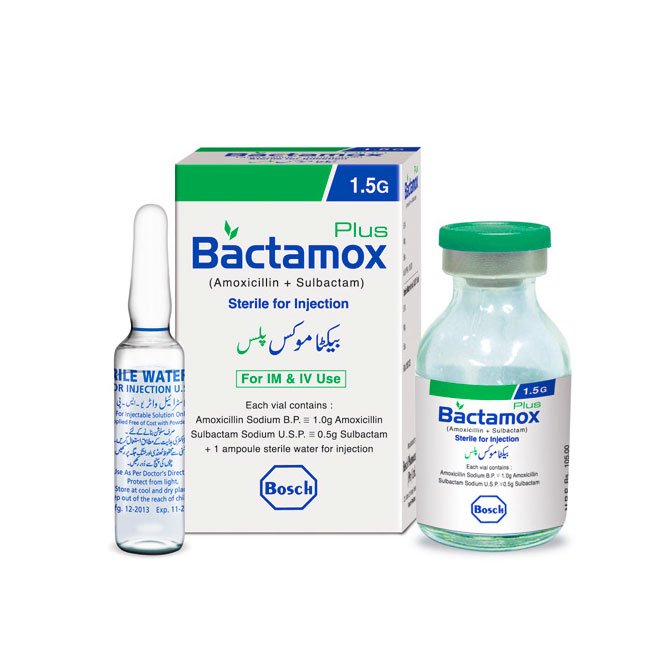
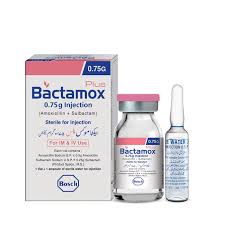
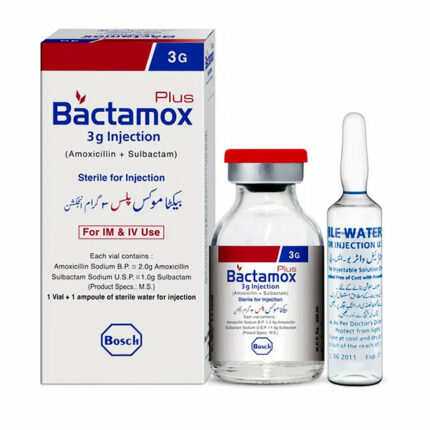
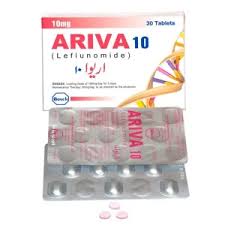
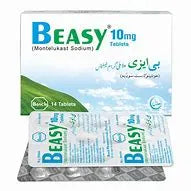
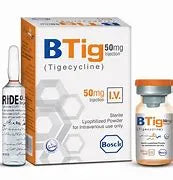
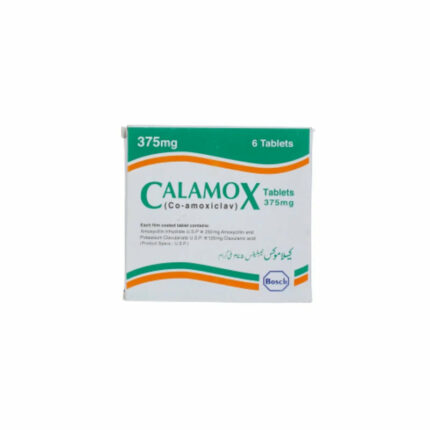
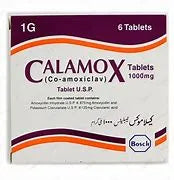
Reviews
There are no reviews yet.